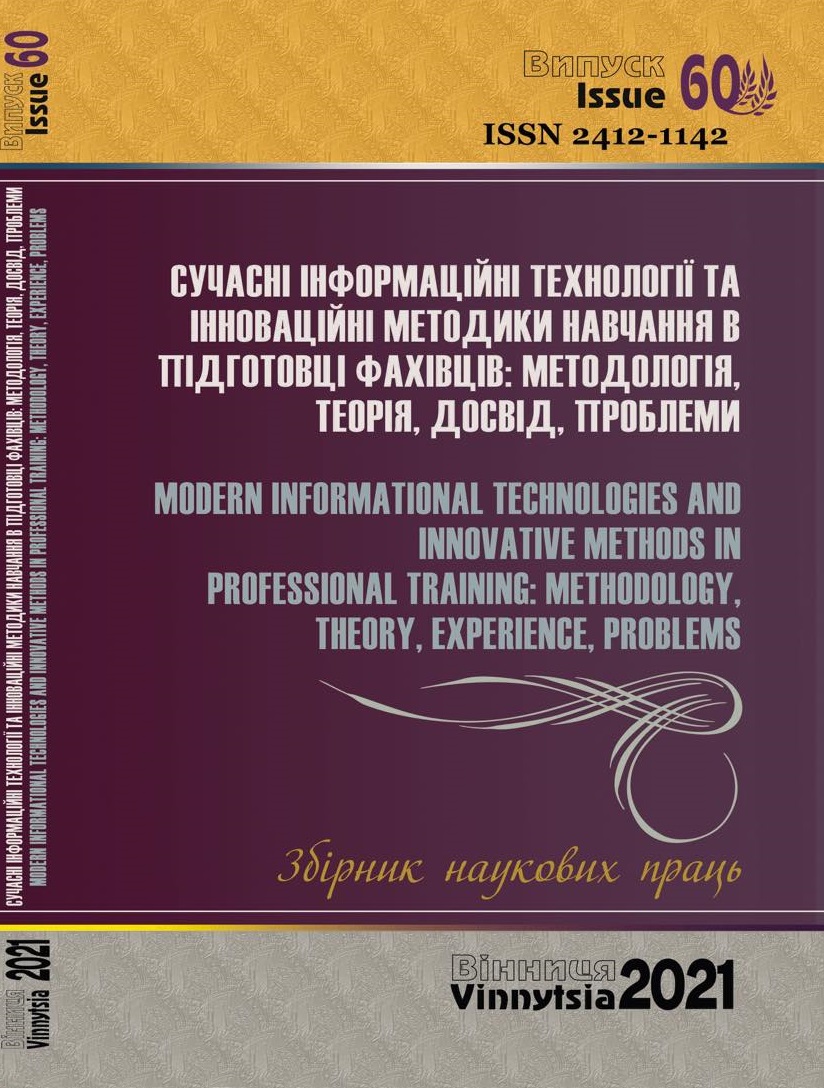THE STRUCTURE OF PUPILS’ EXTRACURRICULAR ARTISTIC-TECHNICAL ACTIVITIES AS A HOLISTIC SYSTEM
DOI:
https://doi.org/10.31652/2412-1142-2021-60-135-142Keywords:
extracurricular artistic-technical activities, structure, structural components, aim, content, educational institution, forms, methods, tools.Abstract
The article deals with the structure of extracurricular artistic-technical activities as a holistic
system. It highlights the importance of justifying structural components of extracurricular artistic-
technical activities with the aim to accomplish its goals. Besides, the article shows that structural
components of pupils’ extracurricular artistic-technical activities, as part of its structure, interact with
each other and qualitatively affect the efficiency of the entire system of extracurricular activities. The
main structural components of extracurricular artistic-technical activities are identified and described
as follows: goals-related, organizational, subjective, content-related, procedural. The goals of pupils’
extracurricular artistic-technical activities act as the end result of teachers’ and pupils’ joint activities.
Moreover, such a result is reflected in the exact, unambiguous categories and concepts. The aim of
extracurricular artistic-technical activities lies in the desire for a specific end result, allows one to build
a certain sequence of actions and analyze them. The organizational component of extracurricular
artistic-technical activities involves those educational institutions which organize such activities for
pupils. The main subjects of extracurricular activities are pupils, students; teaching staff; parents or
guardians; representatives of institutions and enterprises; specialists involved in the educational
process. Also, the article specifies the content-related component. In particular, the content of
extracurricular artistic-technical activities is revealed in the following documents: curricula, syllabi,
educational programmes of clubs, electives, sections, creative associations. Importantly, the article
lists the requirements for the content of extracurricular activities. The procedural component is seen
as one that regulates the organization of pupils’ extracurricular artistic-technical activities, their forms,
methods, tools (didactic and technical), as well as material and technical support. Finally, the article
proves that the effectiveness of the procedural component depends on the interaction between teachers
and pupils and their collaboration.
Downloads
References
Мелентьєв О. Б. Теорія і методика позашкільної освіти. Умань : «АЛМІ», 2013. 182 с.
Мосякова І. Ю. Концептуальні основи модернізації змісту позашкільної освіти : практико
орієнтований посіб. Київ : Педагогічна думка, 2018. Ч.1. 121 с.
Мерилова І. О. Дослідження особливостей формування мережі позашкільних навчальних закладів у
структурі територіальних освітніх округів. Scientific Journal «ScienceRise». No 3(32). 2017, С. 6–9.
Биковська О. В. Теоретико-методичні основи позашкільної освіти в Україні : автореф. дис. ...
доктора пед. наук : 13.00.01. Київ, 2008. 44с.
Новий тлумачний словник української мови / укл. В. В. Яременко, О. М. Сліпушко. Київ : Аконіт,
Т. 2. Ж–О. 911 c.
Фоміцька Н. В. Підходи до визначення властивостей та складових соціальних систем. Актуальні
проблеми державного управління. 2015. No 2. С. 24 –30.
Шабанова Ю. О. Системний підхід у вищій школі : підруч. для студ. магістратури. Донецьк : НГУ,
120 с.
Система позашкільної освіти в Україні – URL : http://www.pou.org.ua/index.php ?option=com_c
ontent&view= article&id=17 (дата звернення : 09.06.2018).
Downloads
Published
Issue
Section
License
Copyright (c) 2021 Ігор Андрощук

This work is licensed under a Creative Commons Attribution 4.0 International License.

